Introduction
Choosing the right cricket equipment for juniors is crucial, not only for safety but also for helping young players enjoy the game and perform at their best. At VKS, with over 50 years of experience advising families and clubs, we know that well-fitted, quality gear can make all the difference for juniors stepping onto the pitch. This guide covers everything parents and players need to know about junior cricket equipment for the 2025/2026 season, from bats to helmets, pads to footwear.
Junior Cricket
1. Junior Cricket Bats: Sizing & Selection
Understanding Bat Sizes
Junior cricket bats come in a range of sizes, designed to suit players from as young as five years old up to teenagers approaching adult height. The standard sizing runs from Size 0 (for the youngest beginners) through to Small Adult (for taller juniors and teens).
Bat Size Chart Overview:
- Size 0: Ages 4-5 (approx. 3ft 8in-4ft)
- Size 1: Ages 5-6 (approx. 4ft-4ft 3in)
- Size 2: Ages 6-7 (approx. 4ft 3in-4ft 6in)
- Size 3: Ages 7-8 (approx. 4ft 6in-4ft 9in)
- Size 4: Ages 8-9 (approx. 4ft 9in-4ft 11in)
- Size 5: Ages 9-10 (approx. 4ft 11in-5ft 2in)
- Size 6: Ages 10-11 (approx. 5ft 2in-5ft 4in)
- Harrow: Ages 12-14 (approx. 5ft 4in-5ft 7in)
- Small Adult: Ages 14+ or shorter adults (approx. 5ft 7in+)
Junior Cricket Bats
Choosing the Right Size
- Annual Sizing: Most juniors will move up a bat size each year as they grow.
- Importance of Fit: A bat that's too large or heavy can hinder performance and technique. Always choose the lightest bat that feels comfortable and allows for proper control.
- In-Store Advice: At VKS, our staff can help measure and recommend the perfect size for your child.
Bat Care: Knocking-In & Maintenance
- Knocking-In: Every cricket bat, including junior models, needs to be knocked in before use. This protects the bat and improves performance.
- What is Knocking-In?: It's the process of compressing and hardening the bat's surface, usually with a mallet or by using it in gentle practice.
- Professional Service: VKS offers a same-day bat knocking-in service, trusted by hundreds of local clubs and families.
- Ongoing Care: Regularly oil your bat, check for damage and store it in a cool, dry place.
Bat Knocking in Preparation Service
2. Junior Pads & Gloves: Comfort and Protection
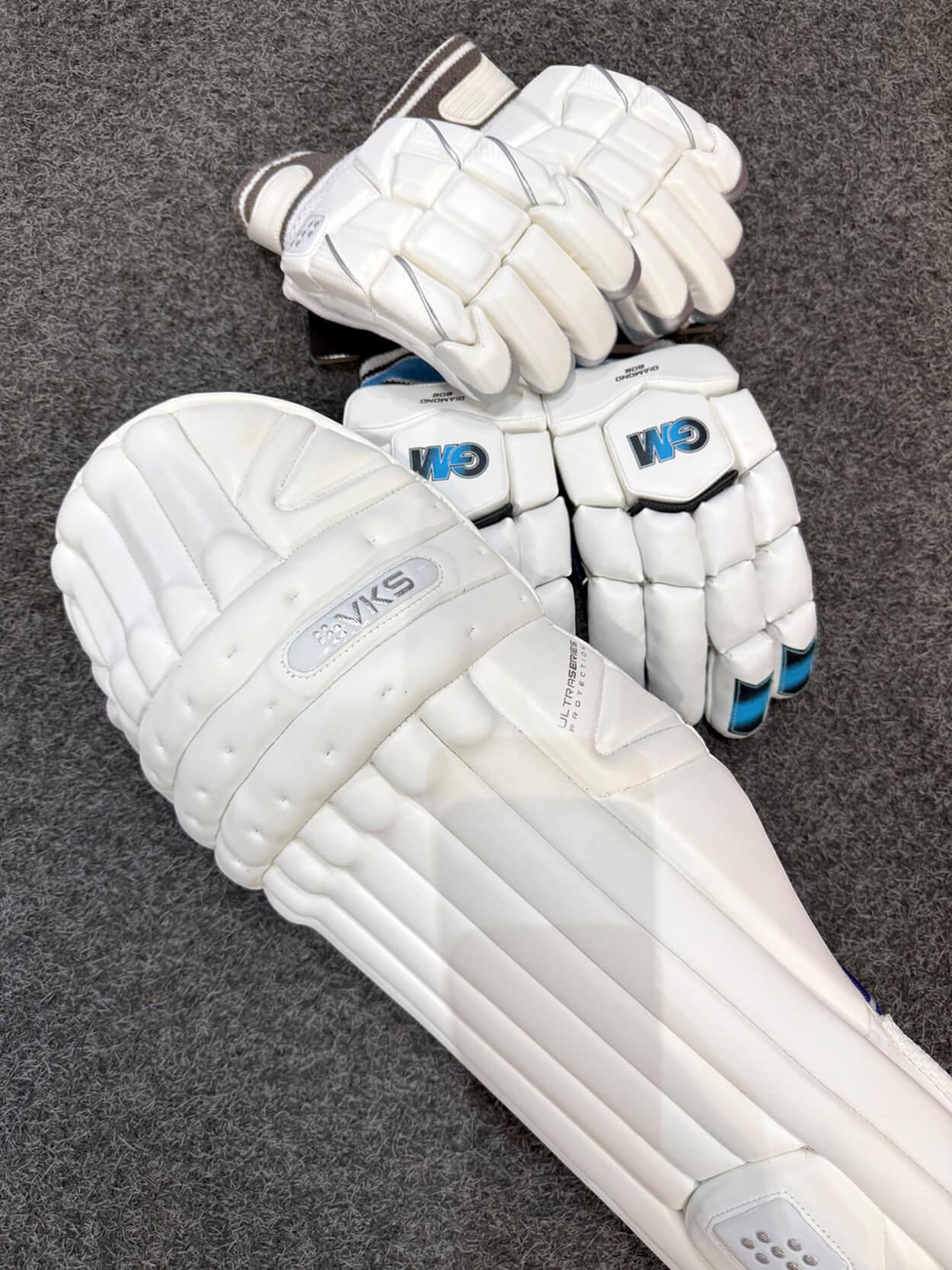
Pads: Finding the Perfect Fit
- Variety of Sizes: Junior pads are available in sizes ranging from Small Junior to Large Junior, ensuring every player gets the right fit.
- Key Features:
- Lightweight Construction: Reduces fatigue and allows freedom of movement.
- Flexibility: Modern pads are designed to flex with the player's movements, making running and fielding easier.
- Expert Tip: Pads that are too big or too heavy can restrict movement and affect confidence at the crease.
Junior Batting Pads
Gloves: Grip and Flexibility
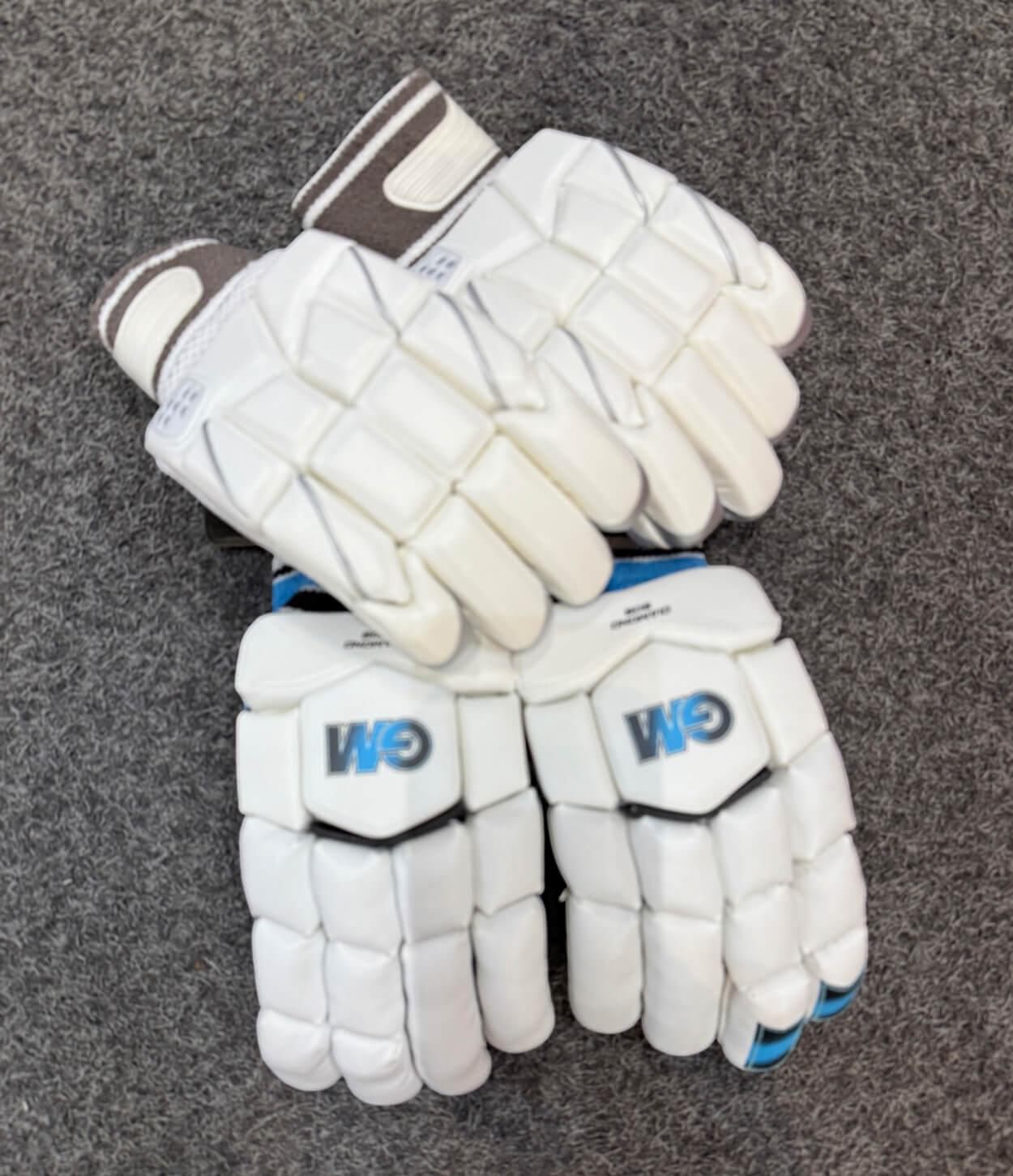
- Importance of Fit: Well fitted gloves help juniors grip the bat properly and protect their hands from impact.
- Features to Look For:
- Lightweight Materials: Ensure comfort and dexterity.
- Flexible Fingers: Allow for natural hand movement.
- Adequate Padding: Protects against fast deliveries.
- Trying On: Always try on gloves with the bat to ensure a comfortable grip.
Junior Batting Gloves
Why Comfort Matters
The more comfortable a junior feels in their equipment, the better they will play. Ill fitting pads or gloves can distract young players and impact their enjoyment and performance.
3. Helmets: Safety First
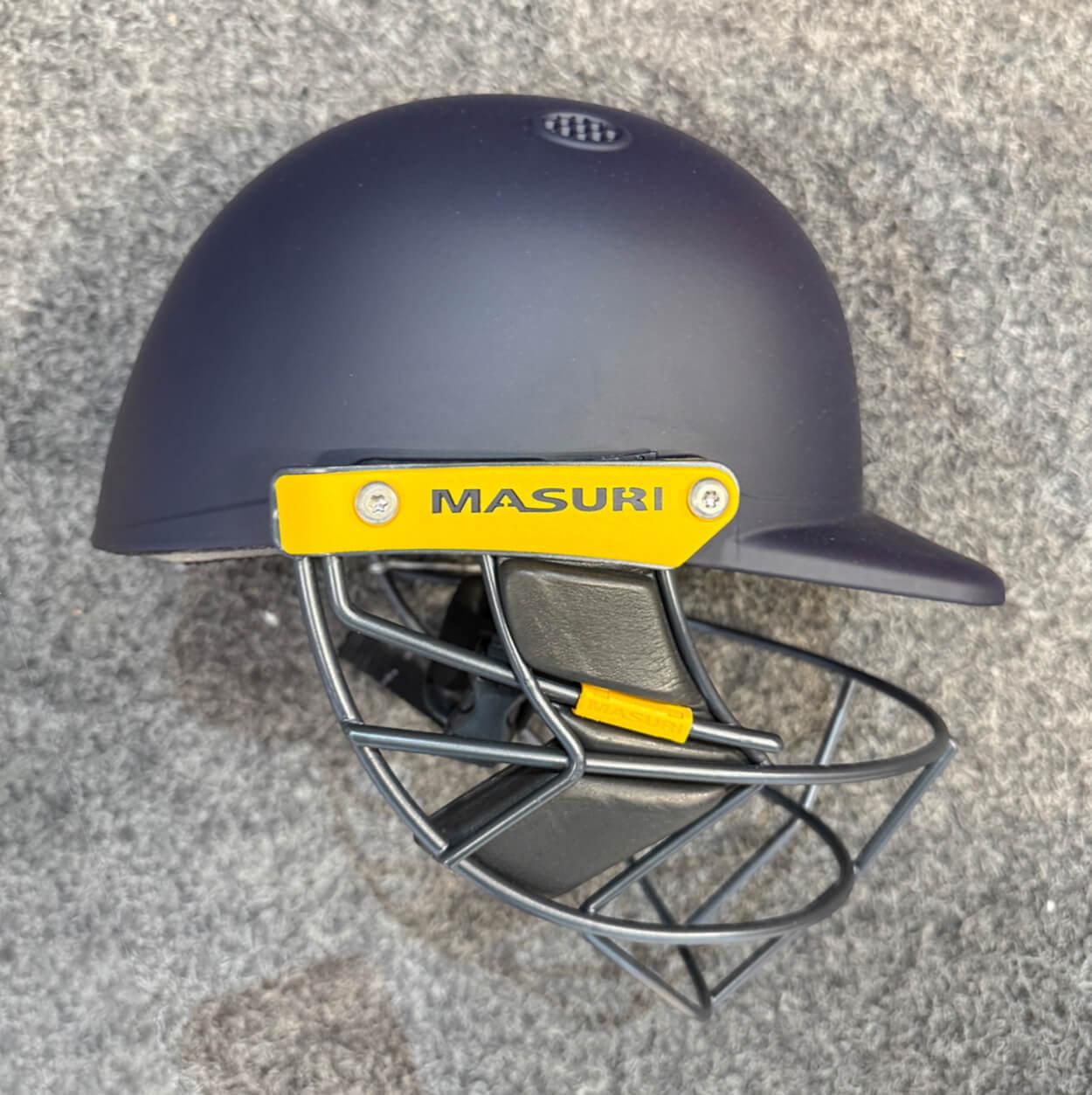
BS Approval Explained
- BS Standards: All cricket helmets sold in the UK should meet the British Standard (BS) for safety.
- Why It Matters: A BS-approved helmet has been tested to withstand high impact deliveries and protect against head injuries.
- What to Check:
- Label: Look for a BS sticker or marking inside the helmet.
- Supplier: Only buy from reputable retailers like VKS, avoid marketplaces or sellers who can't confirm BS approval.
Club Requirements: Neck Guards
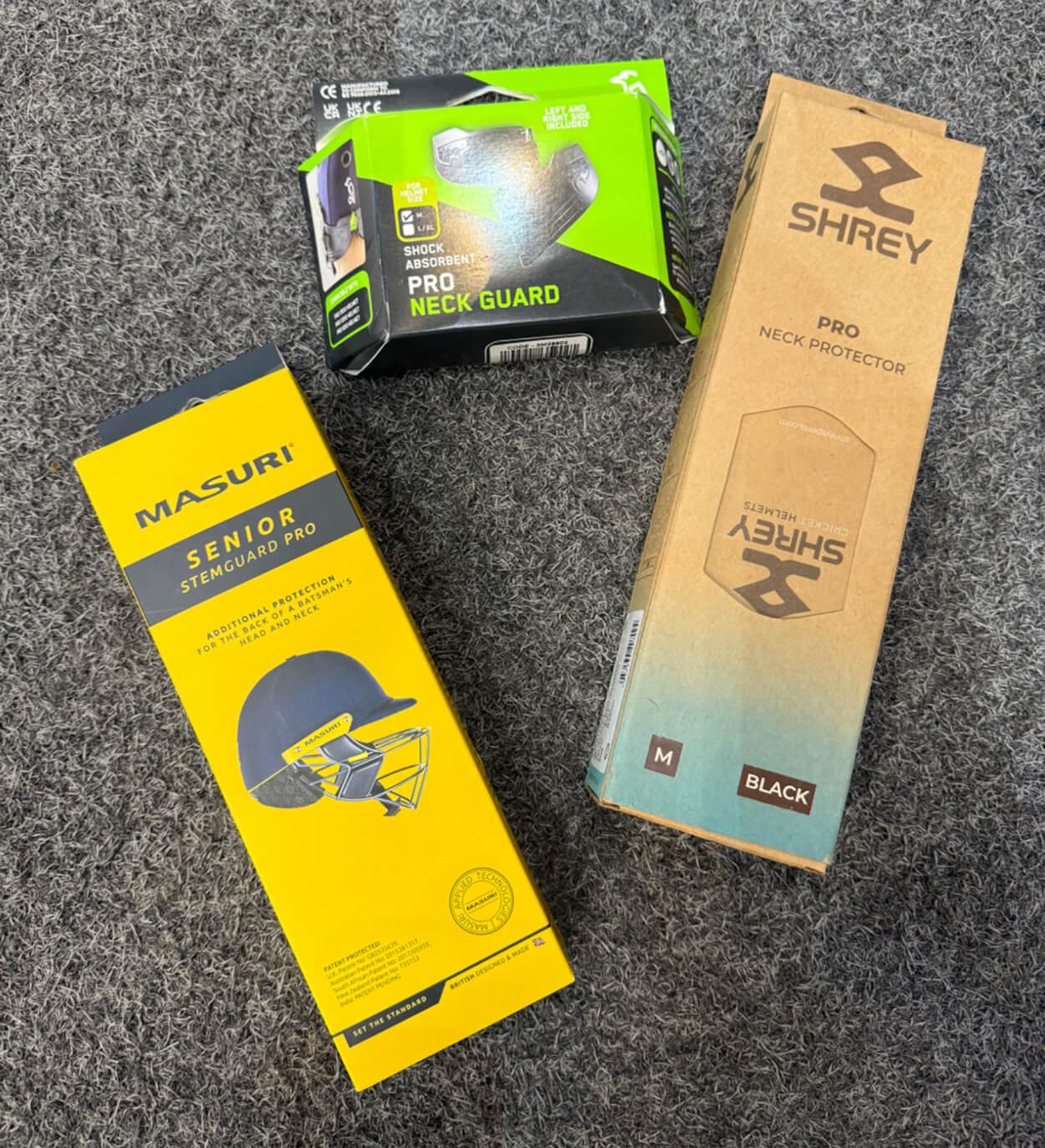
- New Safety Trends: Increasingly clubs are requiring neck guards as part of junior helmet safety.
- What is a Neck Guard?: An attachment that protects the vulnerable area at the back of the neck from stray balls.
- Ask Before You Buy: Confirm with your club if a neck guard is mandatory.
Fitting a Helmet
- Snug, Not Tight: The helmet should fit securely without causing discomfort.
- Adjustable Straps: Allow for a custom fit as your child grows.
- Vision: Make sure the grill or face guard doesn't obstruct vision.
Junior Cricket Helmets
4. Footwear: Spikes, Studs & Comfort
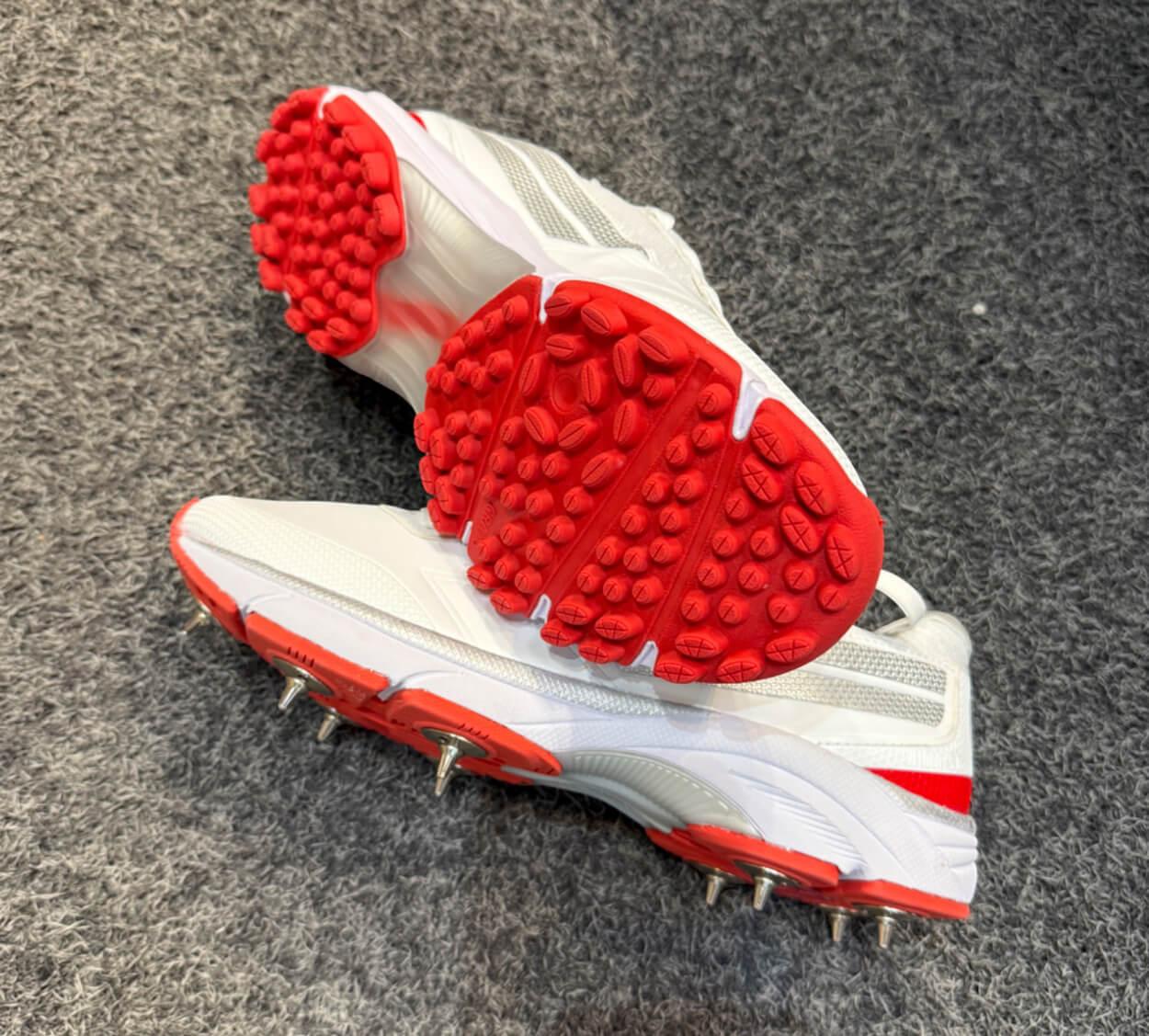
Types of Cricket Shoes
- Metal Spikes: Provide grip on grass pitches, ideal for outdoor matches.
- Rubber Studs: Versatile for both indoor and outdoor play; safer and suitable for multi-sport use.
- All-Rounders: Some shoes come with interchangeable soles for different playing surfaces.
Choosing the Right Pair
- Fit: Shoes should be snug but not tight, with room for growth and thick cricket socks.
- Support: Look for good ankle and arch support, especially for fast bowlers and active fielders.
- Breathability: Materials that wick away sweat keep feet cool and comfortable during long matches.
Why Footwear Matters
Proper cricket shoes reduce the risk of injury and help juniors move confidently and quickly on the field. The right pair can also prevent blisters and fatigue.
Junior Cricket Shoes
5. Other Essential Junior Cricket Gear
Clothing
- Breathable Fabrics: Lightweight, moisture-wicking shirts and trousers make a big difference on hot days.
- Club or School Kits: Many clubs have specific kit requirements-check before purchasing.
- Sun Protection: Consider hats and long sleeves for summer matches.
Junior Cricket Shirts
Bags
- Junior Wheelie Duffle Bags: Designed for younger players to carry their own kit with ease. Look for lightweight, durable options with plenty of compartments.
- New for 2026: VKS wll be introducing an updated range of junior cricket bags, watch this space!
Junior Cricket Bags
Accessories
- Cricket Balls: Junior specific balls are lighter and softer for practice and matches.
- Water Bottles: Staying hydrated is key, especially during summer tournaments.
- Protective Gear: Abdominal guards, arm guards, and chest guards are available in junior sizes for extra safety.
6. Tips for Parents: Buying and Maintaining Junior Cricket Equipment
Where to Buy
- Specialist Retailers: Always buy from reputable cricket specialists like VKS, where you'll get expert advice and guaranteed qualit.
- Avoid Unverified Sellers: Especially for helmets and protective gear-safety standards are non-negotiable.
Annual Review
- Check Fit Annually: Children grow quickly-review all equipment at the start of each season.
- Inspect for Wear: Look for signs of damage or outgrown gear.
Maintenance Checklist
- Bats: Knock in, oil, and store correctly.
- Pads & Gloves: Air out after use; wipe clean if muddy.
- Shoes: Remove mud and dry thoroughly to prevent odor and deterioration.
- Helmets: Check for cracks or loose fittings; replace if damaged.
7. Why the Right Equipment Matters
- Confidence Boost: Properly fitted, comfortable gear helps juniors focus on their game, not their kit.
- Skill Development: The right bat size and weight allow for better technique and faster improvement.
- Safety: Quality protective gear reduces the risk of injury, giving parents peace of mind.
8. VKS: Your Trusted Junior Cricket Specialist
- Expert Advice: Our team has decades of experience fitting junior players and advising families.
- Wide Range: We stock all leading brands such as Adidas, Gray-Nicolls, Gunn & Moore, Kookaburra, and more.
- Custom Services: Same-day bat knocking in, professional repairs and more.
- In-Store Experience: Visit us at 31 Bond Street, Ealing, London, or shop online at www.vks.com.
Conclusion
Investing in the right junior cricket equipment is an investment in your child's enjoyment, safety, and progress on the cricket field. At VKS, we're committed to helping every young player find the perfect fit, so they can step onto the pitch with confidence, comfort, and the best chance to succeed.




